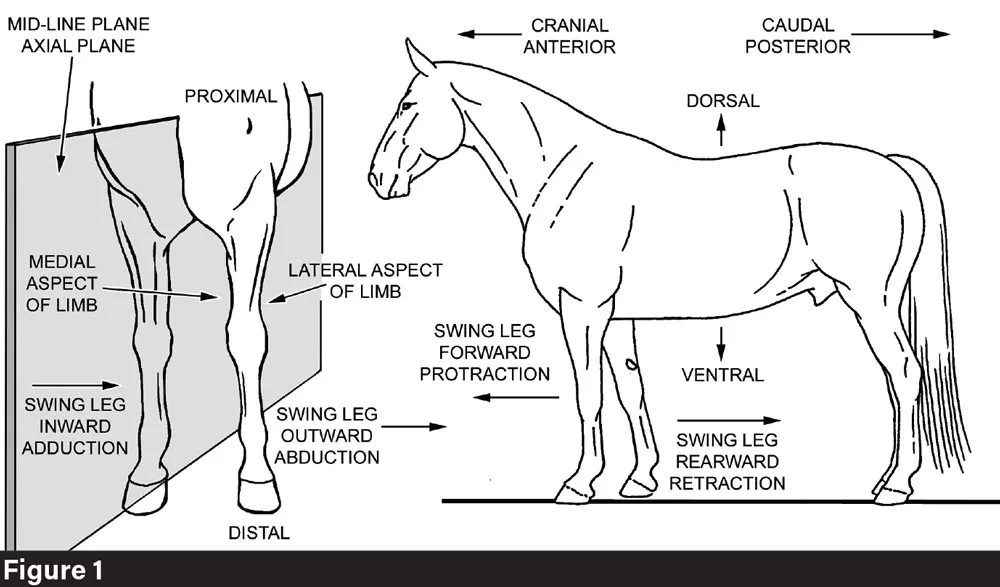American Farriers Journal
American Farriers Journal is the “hands-on” magazine for professional farriers, equine veterinarians and horse care product and service buyers.

Anatomical terminology that will be referenced throughout this article. Photo by: Dr. Deb Bennett
This is the first in a series on straightness and its effects on the equine hoof.
Read "How Leaning Affects Equine Anatomy" and "How Crooked Carriage Affects Equine Performance"
Articulation is one of those words that reverberates with multiple meanings. In this first installment of a series concerning straightness and its effects on the hoof, I intend to supply not only language by which you can articulate the relevant concepts but also to convey a multifaceted concept of all that “straightness” encompasses.
Straightness — or its opposite, crookedness — permeates all aspects of the rider’s experience, but also the farrier’s; and yet so subtly that neither the rider nor the farrier, nor even the veterinarian, may be aware that crookedness is the root cause of many apparently unrelated difficulties.
Over the century and a half since modern farriery and veterinary practice came into being, straightness generally has been neglected…